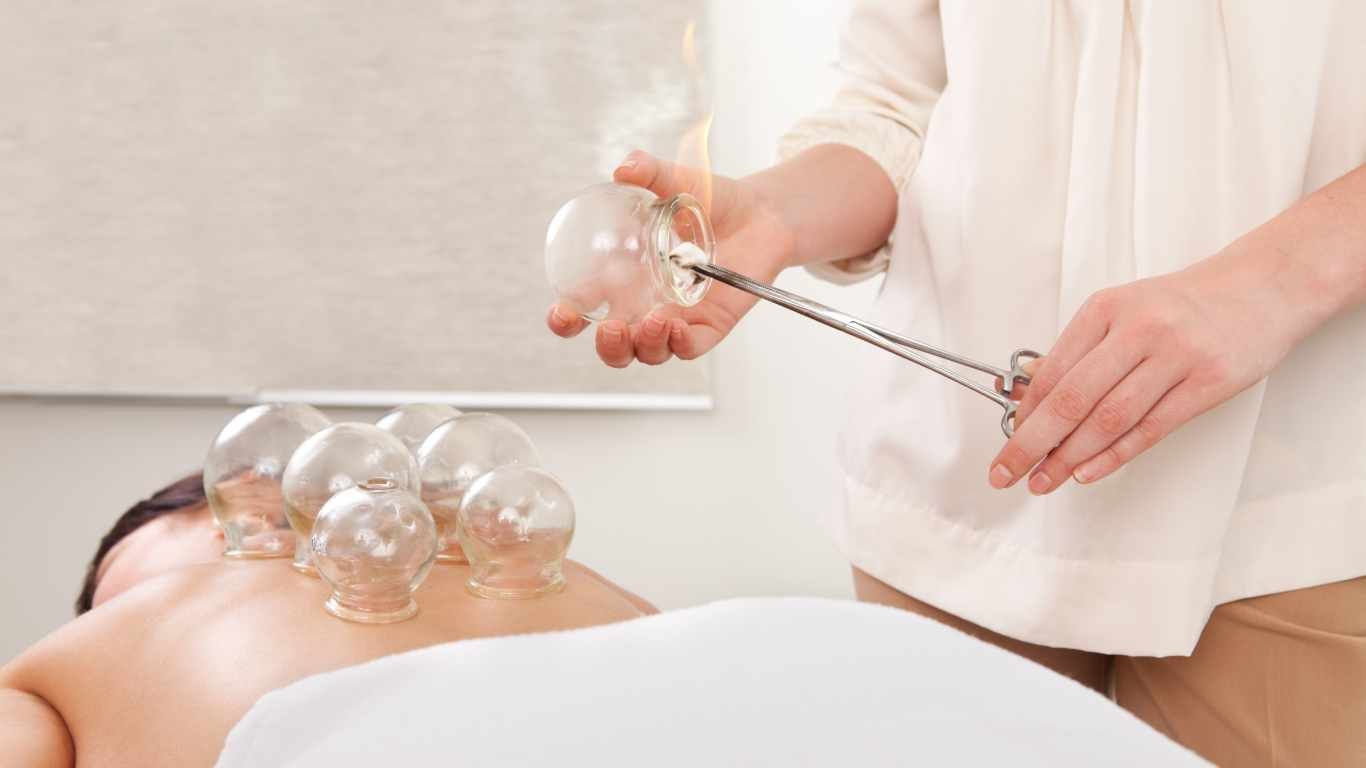
What Is Cupping Therapy Preston UK?
Cupping therapy, founded in traditional Chinese and West Asian medicine, has been used for millennia to relieve pain and promote well-being. Cups are strategically placed on the back, stomach, arms, and legs in this therapeutic therapy. The cups’ vacuum or suction force softly lifts the skin, increasing blood flow and energy in the targeted locations. The cups’ suction relieves stress, enhances circulation, and aids the body’s natural healing.
The cups used in this therapy might be glass, bamboo, or silicone. Cupping therapy in Preston has become popular as an alternative or supplemental treatment for musculoskeletal pain and stress. Cupping therapy improves balance and energy, drawing on ancient healing traditions that have influenced modern wellness practices.
Cupping Therapy Is Used For:
Ancient cupping treatment has been used to treat various diseases, including muscular pains and other health difficulties. Cupping treats lower back, neck, shoulder, knee, headache, migraine nihu jm, and muscular pain. Placement of cups on significant acupressure sites may help cure digestive and skin ailments, increasing its use beyond musculoskeletal issues. Cupping benefits to deal with:
- Shingles
- Facial paralysis
- Cough
- Dyspnea
- Acne
- Lumbar disc herniation
- Cervical spondylosis
- Brachialgia
- Carpal tunnel syndrome
Types of Cups:
Cupping therapy comes from many different cultures and medical settings. The cups used in this therapy are made of other materials depending on the therapist’s taste, the treatment’s goals, and the client’s comfort. Various cups made from different materials are used in the treatment to create healing pressure. Practitioners choose cups based on their benefits and the client’s needs.
This makes the healing process flexible and adjustable. Whether the cups are made of glass, silicone, or bamboo, the material plays a significant role in how well they work and relate to culture. This makes cupping treatment a dynamic practice that fits easily into many different medical systems worldwide. Common types of cups used in therapy are:
Glass Cups:
In cupping therapy, glass cups are essential. Each mug is spherical and comes in different sizes. Before putting the cups on the skin, they are quickly heated with an open flame as part of the process. When the air inside the cup cools down, it creates a vacuum, which is what pressure is.
This pulling action is good for you in two ways:
- It increases energy
- It increases blood flow
The targeted vacuum stimulates blood vessels and improves blood flow to the treatment area. The general energy boost also helps the healing process. This method is unique and successful among the many types of cupping treatments because it uses carefully chosen glass cups and heat that is controlled.
Plastic Cups:
Plastic cups have become a modern option to the old glass cups used in cupping treatment. In addition to their sleek, modern look, these cups usually have a changeable suction pump that lets practitioners fine-tune the pressure level. Because these cups are made of plastic instead of glass, they are lighter and less likely to break, which makes therapy sessions easier for the people using them.
The suction system can be adjusted so clients have a personalised and relaxing experience. This new version of cupping makes it easier to use and shows how healing practices are changing by using new technology to make the practitioner’s job easier and the people who want to benefit from cupping treatment more comfortable overall.
Bamboo Cups:
Natural bamboo cups are becoming more popular in traditional and organic settings because they suit the environment. Since these cups are made from eco-friendly bamboo, they are a good choice for people who care about the environment. Bamboo cups differ from glass cups because they can be used for cupping treatment without heat. Because of this, bamboo cups are an excellent choice for practitioners and clients who want a softer, less heat-dependent application.
The natural beauty of bamboo adds to the general appeal of the treatment, connecting the healing process with nature in a way that works well. Bamboo cups show how flexible cupping can be and how traditional knowledge can coexist with modern environmental concerns in the ever-changing world of alternative medicine.
Ceramic Cups:
Compared to standard glass or plastic cups, ceramic cups are a unique option in cupping therapy. Ceramic cups are known for being long-lasting and good at keeping heat in. They offer a unique way of cupping by adding warmth to the healing process. Ceramic’s ability to keep heat in improves the whole experience for clients, making the treatment feel more comfortable and soothing. Because of this, ceramic cups are different, creating a unique healing space that combines the benefits of cupping with the mild effects of heat.
Ceramic cups last a long time and can be used repeatedly. This makes them a good choice for healers who value both traditional ways and the practicalities of long-term use. There are many different kinds of materials used for cupping, but clay cups stand out because they can make the therapy feel warmer and more stable.
Earthenware Cups:
Earthenware cups made from natural clay are used in cupping treatment, a simple and natural way to heal. These cups are porous, so heat can slowly move through them during the treatment. This gives the healing experience a physical and grounded feel. People value earthenware cups because they have a history of being used in traditional mending methods. They bring a sense of heritage and age-old knowledge to therapy sessions.
The earthy scent these cups give off helps create a more holistic environment, which allows the person and the recovery process to link more deeply. As a representation of nature’s embrace, earthenware cups show how old practices and the essential parts of therapy can work together in harmony. This makes them a good choice for people who want a grounded and culturally rich cupping experience.
Silicone Cups:
With flexible silicone cups, cupping treatment becomes more accessible and lively. These cups are easy to use and allow practitioners to do dynamic cupping methods. They are known for being flexible. Dynamic cupping differs from static cupping because the cups are moved over the skin to massage and trigger the muscles below. Because silicone cups are adjustable, they can be glided over the skin without discomfort, making the healing experience better for the person.
Silicone is soft and well-tolerated by the skin, which makes this unique pinching method even more appealing. As a form of treatment that can be used in many different ways, silicone cups are flexible and new. They are made for people wanting a modern, mobile, and comfortable cupping experience beyond the standard static application.
Types of Cupping Therapy & Methods :
Cupping treatment, an ancient healing practice, includes dry and wet cupping, both with their benefits.
Dry Cupping:
Dry cupping begins with the therapist inserting combustible material like alcohol-soaked cotton, herbs, or paper in a cup. After lighting, the cup is quickly inverted and put on the patient’s skin.
A vacuum occurs when the cup is placed on the skin as the flame consumes oxygen. This vacuum raises and reddens skin as blood vessels expand, increasing blood flow and localised circulation. The cups stay in place for 3 minutes and may be repeated on other body parts. Modern dry cupping uses a rubber pump to produce suction instead of fire. Therapists can also use silicone cups to massage the skin.
Wet Cupping:
Wet cupping, sometimes called “bleeding cupping” or “Hijama” in Arabic medicine, is two steps. The therapist first applies a cup to the skin to create moderate suction for 3 minutes.
After removing the cup, the therapist makes minor skin incisions with a little scalpel. The second suction draws a little blood through the wounds. Some receive 3-5 cups every session. Wet cupping is followed by antibiotic ointment and bandages to avoid infection. Skin usually recovers within ten days.
What Does the Research About Cupping Therapy?
Cupping treatment research is minor. However, some trials show advantages for some illnesses. Cupping benefits acne, herpes zoster, and discomfort, according to a 2015 Journal of Traditional and Complementary Medicine study.
Cupping may be beneficial when paired with acupuncture or pharmaceuticals for herpes zoster, acne, facial paralysis, and cervical spondylosis. However, these studies have limitations and require better-designed research to reach more specific results. According to the British Cupping Society, cupping treatment treats the following:
- Blood disorders
- Rheumatic illnesses
- Reproductive disorders
- Gynaecological disorders
- Skin issues
- High blood pressure
- Anxiety
- Depression
- Allergy
- Asthma-related bronchial congestion
Does A Doctor recommend Cupping Therapy?
While some people report favourable cupping therapy experiences, healthcare experts prescribe it as a supplemental medicine treatment differently. Cupping is frequently seen as a complement rather than a solo medical therapy.
Cupping should be discussed with doctors to ensure it fits their treatment plan and meets their health issues. Professional counsel is needed to assess the pros and cons of any supplemental therapy in comprehensive healthcare.
Is Cupping Painful?
Cupping may cause pressure, warmth, or a faint burning sensation. While these sensations may be present, the experience should not be painful. Cupping therapy practitioner Cavanaugh says cups’ suction force may be modified to suit individual tolerance. If a copper has discomfort, they should tell the therapist so they may make adjustments to make the session comfortable and successful.
What Are the Side Effects of Cupping Therapy?
A skilled health practitioner can safely provide cupping treatment. Cupping might cause minor side effects in the places where the cups touch the skin. Temporary pressure or warmth might be felt. Mild discomfort is normal, but extreme pain should not be experienced. Also, burns are possible if the cups are heated during treatment. The suction impact on blood vessels can also cause bruising.



